Back in college, I visited to this run-down pizzeria shop called Sammi’s.
Their logo had a picture of a pyramid on it. No one understood what that had to do with pizza.
I pitched Sammi repeatedly on my startup’s text message coupon product at the time. He never bought.
But I’ll never forget the time I saw him hand a $200 check to some kid selling an ad from a local magazine like it was nothing.
Two-hundred bucks looks like a lot of money when you’re a nineteen-year-old college kid. And especially when all your customers are on free-trial.
What caused Sammi to buy a print ad but not what I was offering?…
The education you need to become an effective marketer is just a lot of little experiences like that.
Those experiences are like “flicks” to your forehead.
They are the market saying “Pay attention!” as it tries to teach you something.
In the years since that time at Sammi’s, I’ve started and launched a SaaS business. Today I run a growing subscription-based service business. So far, my team and I have created hundreds of sales funnels for startups and small businesses. I also had the opportunity to lead a Mastermind group for entrepreneurs starting SaaS companies.
From this wide mix of experiences, I’ve been able to observe several success patterns. These success patterns are relevant to every business marketing itself online—but especially SaaS companies.
I’m telling you this, because what I’m about to share with you is not just theory.
This is about people. It’s about the people who are stuck in your sales funnel. It’s about the people who haven’t heard about your product yet. And it’s about the people who are your competitors.
While people may not always behave in a predictable manner, they are influenced by the Laws of Sales Funnel Physics.
Let’s jump in.
Note: At 6,300 words, you I don’t expect you will read this all in one sitting. So I created a free PDF of this resource that you can refer to again and again when it’s time to redesign your site.
First Law of Sales Funnel Physics: Law of Visibility
What is it?
Imagine two different scenarios.
Scenario A—Relaxing on the beach on a hot summer day with no sunscreen.
Scenario B—Relaxing on the beach on a hot summer day when your doctor shows up to tell you you’re at risk of getting skin cancer.
In scenario B, you’re going to react right away. You’re on the beach without sunscreen, and the doctor has given you urgent information on why you should wear sunblock.
If putting on sunscreen became your “conversion goal” after the need was recognized, B outperforms A, because the offer is right in your face.
That’s why the first law of Funnel Physics is the Law of Visibility. In other words, people will convert on offers that are highly visible and noticeable to them.
If they don’t see it, they won’t convert.
So it all comes down to something being seen.
Now, how can we apply this to your marketing funnel?
Example:
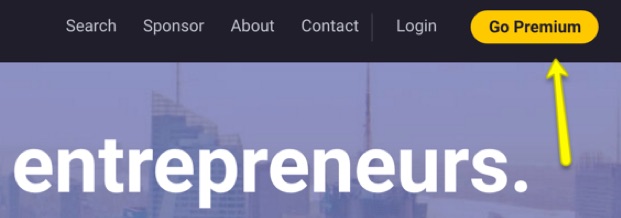
Andrew Warner and his team at Mixergy rolled out a new site design a little while ago.
One thing that stood out to me was the prominent call-to-action button in the top right corner.
It’s visible on every page of the website.
This is an excellent example of the Law of Visibility in action. By featuring a highly visible call to action (CTA) for your core offer across your website, conversions are almost guaranteed to increase.
In fact, we did the same thing on our website:
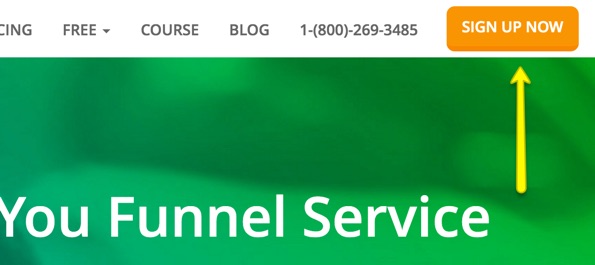
We wanted more people across our website to see and learn about our productized service. You can see below how this change had a sustained impact on how many people viewed our homepage.
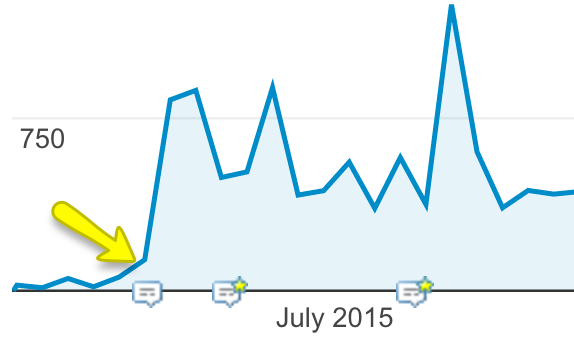
But this is just one example.
How to Apply it to Your Marketing Funnel
Let’s brainstorm for a second.
Where can you put in place a simple change like this on your website to cause more traffic to flow deeper into your funnel?
Think in terms of “global” or structural changes that will be seen across many pages on your website.
Here a few ideas off-hand:
- Navigational changes like the example above
- Redesign or add a CTA to your footer
- Install an exit pop-up
- Promote a lead magnet in the sidebar of your blog, as well as at the end of every blog post
- Run a new campaign using Kissmetrics Engage that targets only visitors with a specific offer
Those would be the top ones to implement, especially if your SaaS business is trying to grow via content marketing.
The Bottom Line
Offers—free or paid—that aren’t seen, don’t convert. So shine some light on them!
Second Law of Sales Funnel Physics: Law of Big Changes
What is it?
Imagine you’re an engineer building a cross-country railroad.
But there’s a problem: a stretch of mountains lies in-between the train’s start and end points.
You have two options: you can lay the track so it snakes around the mountainside, or you can use explosives and heavy drills to create a tunnel that goes straight through.
Which do you choose?
Consider that the universe is (mostly) rational. By this, I mean there is cause and effect.
Nothing happens unless something causes it.
If you want to cause growth in how your sales funnel converts, you have to make a significant change to your sales funnel—the copy, the structure, the design.
Whatever big result you are looking to produce, be prepared for the change to be significant from the customer’s standpoint.
That last part is important, because you are trying to influence your target customer, and changes that seem significant to you may not be that different from their point of view.
Sometimes the difference is hard to understand.
In the mountain scenario, the decision becomes easier if we view it as a customer optimization problem.
We could ask, what does a passenger on the train line want?
- Do they care about seeing the beautiful snow-capped mountain scenery while on their cross-country journey?
- Do they care more about getting to their destination faster?
There is a big difference between drilling a tunnel and snaking around the mountain. But if you know your customers value a shorter trip, the tunnel would be the better choice.
If they care more about speed, then the answer to the problem is to drill a tunnel through the mountain.
Lucky for you, you’re laying down code on your website, not train tracks.
Example:
Demo Consultation vs. Instant Video Demo
This is a good one, especially if closing the sale means getting on a phone call.
The example below is from a case study where a consulting company A/B tested a “Free 5-Min Demo Video” offer in place of an offer to schedule a demo consultation.
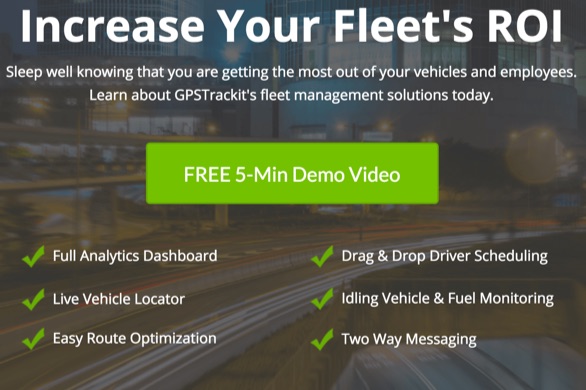
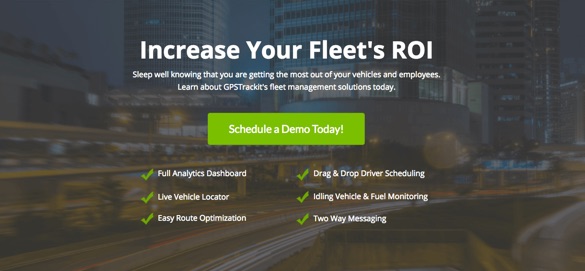
The results were powerful.
By changing the offer to a demo video instead of a scheduled demo, the conversion rate went from 1.7% to 15.3%—a 9X increase. The offer of the free demo won in a landslide.
Although nothing on the page changed except the text describing the offer, this mattered a lot from the customer’s perspective.
Why? Most people aren’t enthusiastic about scheduling a demo or a consultation because it requires them to (1) wait, (2) coordinate their schedule, and (3) commit a fixed amount of time.
The “free 5 min demo” offer converts much better, because customers can watch it right away without a phone call.
Side note: We recently tested this same idea of a free demo offer on our pricing page vs. scheduling a consultation. The data is still coming in, but lead conversions are up significantly.
This example illustrates that structural changes are most important when you are thinking about “big changes.” Structural changes include a difference in the number of steps or the offer itself.
This is different from merely changing design or copy, because it represents a more significant change to the customer’s experience in your funnel.
As a result, the change is more drastic and so are the results.
Freemium vs. Free Trial
When I started my first SaaS business, we offered a free trial.
Later, we removed it and went from generating weekly sign-ups to zero (bad move, duh).
A better example here is Mailchimp. After building a profitable business with 100,000 users, they went freemium in 2009 offering free email marketing accounts to 500 subscribers.
One year later, they reported a revenue increase of over 150%.
How to Apply it to Your Marketing Funnel
If you’re not converting or you see a big bottleneck in your online sales funnel, start with a BIG change.
Go big or go home! If you’re only seeing a “trickle” of people moving from one step to the next, the issue is probably bigger than simply, “Oh, let’s test a different headline,” or “Oh, let’s change the button color to yellow.”
The Bottom Line
The results may be positive or negative. The important thing here is that you won’t really know which version is more effective unless the spread is statistically significant.
When creating an A/B test or a sequence test to improve your conversion rate, go for big changes. Little changes (usually, but not always) yield a proportionally smaller result.
So blow a hole in the mountain.
Challenge your assumptions.
And take a walk in your customer’s shoes.
Big changes mean big growth for your bottom line.
Third Law of Sales Funnel Physics: Law of Repetition
What is it?
Examples:The Law of Repetition is about repeated messaging and consistent follow-up.
This happens when you are presented with multiple lead magnets asking for your email address.
For instance, Clay Collins and co. over at Leadpages have repeatedly pointed out that each of their blog pages have multiple offers and CTAs. This, in turn, has helped them quickly build an email list of 200,000+ email subscribers.
I applied and refined this technique on my company’s website in 2014 and later wrote about the results in a guest post on Leadpages. I gave the method a name—“The Every Page Rule.”
The Law is always in effect when you implement email follow-up sequences or retargeting ads.
In 2013, I tried my hand at launching an info product. The email sequence I wrote was “OK” so I rewrote it and kept iterating.
The final sequence was aggressive with the follow-up, but the truth is that it worked. People bought the course at a very consistent rate.
Noah Kagan later reminded me of this principle when he published some research from people using his SumoMe tool to help people build their email lists faster.
The research showed that people were more likely to opt-in if they were repeatedly shown the pop-up on a website until they signed up.
Again, not saying that’s the best way to do it. In fact, I would say being too aggressive makes you look not cool.
Want another example? Look at the Kissmetrics funnel. If you sign-up for a free trial or opt-in to one of their lead magnets and request a demo, you are instantly entered into a follow-up sequence where an Account Manager will contact you to schedule a demo.
And here’s one more from a little-known multi-billion dollar company called Amazon.
Ever heard of Prime?
Prime is a premium subscription which gives Amazon customers perks like free 2-day shipping and access to streaming movies.
The Amazon website is covered with call-to-action buttons for Prime, and 54 million customers have opted into this service as a result.
How to Apply it to Your Marketing Funnel
If you’re a SaaS business, you can apply the Law of Repetition in a variety of ways to your own sales funnel.
Here are the best ideas, in order of priority:
- On-site CTAs that are clear and relevant to the stage of the funnel the prospect is in.
- Follow up with potential customers using an email automation to get them on the phone, get their feedback, or nudge them toward signing up.
- Show an ad or link in your blog’s sidebar or navigation, along with an exit pop-up, to promote your lead magnet and grow your email list.
- Get more return traffic with retargeting ads. Make sure to segment visitors based on where they are in your funnel. For instance, you may want to treat people who reached your checkout page differently from those who signed up for your free 5-day e-course.
- Finally, you can get more advanced using a combination of tactics (Think: Amazon + Smart Funnels). For instance, after a customer checks out, you can upsell him/her on the benefits of the next level pricing package. Similarly, when he/she comes back to the website later on, he/she will see CTAs on the blog nudging him/her and offering benefits for upgrading. This can also be done over a course of weeks or months via automated email follow-up to anyone who has purchased.
The Bottom Line
Repetition yields higher conversion rates and can also increase the value of an average customer to your business.
Don’t let leads forget about you and your services—constantly remind them of what you offer and how it can benefit them.
Just be sure not to overdo it, or you risk hurting your brand.
Fourth Law of Sales Funnel Physics: Law of Clarity
What is it?
“Better to be clear than clever.”
When I was a little kid, I’d go to the doctor at least once a year for my checkup.
I remember the waiting rooms were always gray and super boring.
So I’d pick up one of the outdated magazines they had laying around and flip through it.
I found most of the ads weird and frustrating, because I couldn’t tell what they were trying to sell.
Did they want to make money, or just confuse people? It was unclear to me.
Turns out, I was on to something.
Fast forward years later to the first time I heard the expression, “Better to be clear than clever” from Dane Maxwell, a serial entrepreneur, while he was being interviewed by Andrew Warner from Mixergy.com.
This expression highlights the biggest reason why most sites don’t convert well in the first place: people don’t buy what they don’t understand.
Many people make the mistake of focusing on creating a catchy headline, instead of focusing first on customers’ understanding by creating effective copy for their sales funnel.
Consider a few examples.
Examples:
The following case study documented on Visual Website Optimizer’s blog illustrates how clear copy converts.
Movexa is a supplement product with a direct response website funnel. In other words, they are looking to make sales directly to people visiting their site.
In an A/B test where they clarified what the product was by adding the word “supplement” in the headline, sales increased by nearly 90%!
Here’s another example from a company selling personal training subscriptions.
As cited by Unbounce, the company A/B tested a clearer “boring” and uncreative headline against the original.
The result? 38.46% more training memberships were sold.
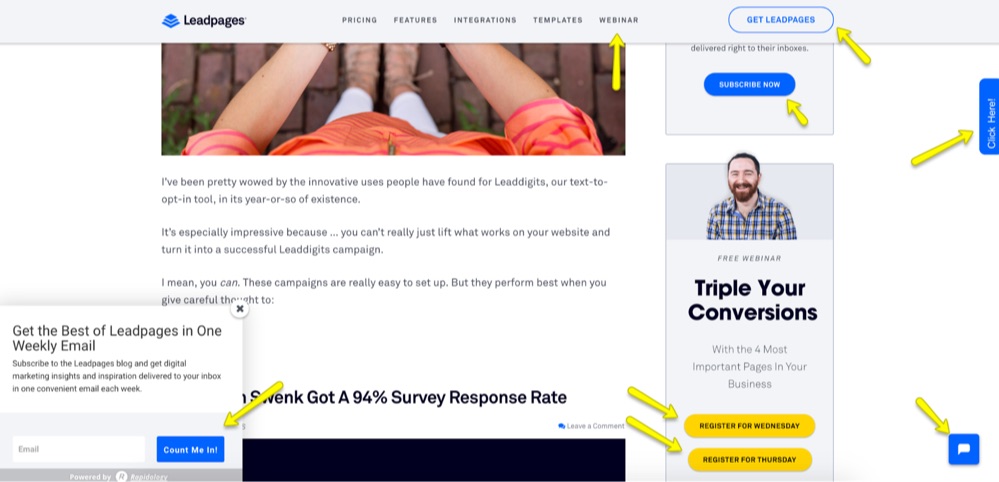
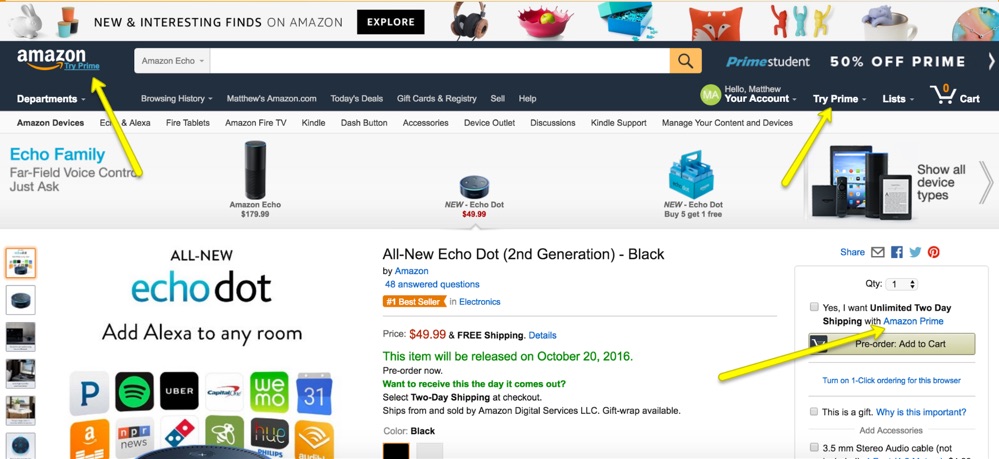
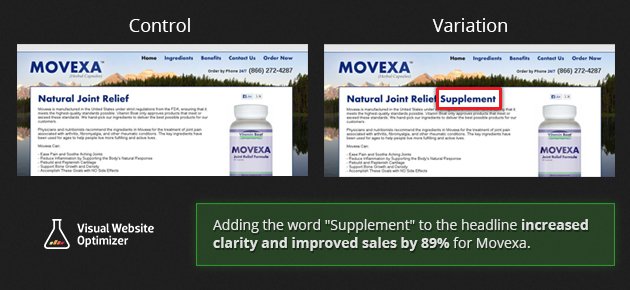
No comments:
Post a Comment